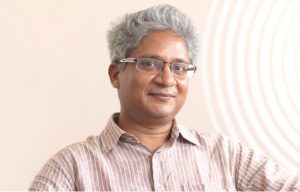 Rajan Sankaran is a internationally renowned practitioner, teacher, and theorist of homeopathy.
Rajan Sankaran is a internationally renowned practitioner, teacher, and theorist of homeopathy.
Rajan Sankaran is the son of homeopath Dr. P. Sankaran. He graduated from the Bombay (Mumbai) Homoeopathic Medical College in 1981. He remains on the staff of that institution, now known as Smt. Chandaben Mohanbhai Patel Homeopathic Medical College, as an Assistant Professor of repertory and Honorary Physician.
Dr. Sankaran has published many books on homeopathy, including ‘The Spirit of Homoeopathy’, ‘The Substance of Homoeopathy’, ‘The Soul of Remedies’, ‘Provings’, ‘The System in Homoeopathy’, ‘An Insight into Plants (Vol 1, 2 & 3)’, ‘The Sensation in Homoeopathy’, including his recent writings ‘Sensation Refined’ and ‘Structure – Experiences with the Mineral Kingdom’ etc.
Dr. Rajan Sankaran lives and practices in the Juhu area of Mumbai, India.
MB: Dr. Sankaran, welcome to the Hpathy Hot-Seat once again after eight years! I was recently reading your new book The Synergy in Homeopathy and I found it really very interesting because of the more integrated and encompassing approach that you have shown in this work. Can you please share with our readers what this ‘synergy’ stands for?
RS: The contemporary approach in homoeopathy, termed Synergy, has evolved over the last thirty years and has come to be advantageous when utilized in homoeopathic practice and is overall a clinically successful method. While utilizing in-depth knowledge in fundamental and traditional tools of homoeopathy like the Materia Medica, Repertory, and the Organon, the Synergy method also values the newer approaches like Sensation, Kingdom, Miasm and Source understanding.
‘Synergy’ denotes the coming together of two or more things to create an effect that is much greater than the sum of the two.
In homoeopathic practice, using two or more different approaches in tandem produces the best results. The utilization of traditional homoeopathic tools such as materia medica and the repertory (left-brain concepts) in combination with more modern homeopathic approaches such as sensation and kingdom understandings (right-brain concepts) generates the most success in clinical practice.
This idea, termed Synergy, has evolved over the last three decades and has come to a very effective position. This is a system that can be taught, practiced, and replicated successfully by students and practitioners.
This method has brought together both the old and the new approaches in homoeopathy – it has established a universal platform where all approaches in homoeopathy are welcomed and used to aid in the patient’s recovery.
This triangle figure represents the Synergy concept in homoeopathy:
The peak of the triangle is the Genius. Genius here means the prevailing spirit or distinctive character of something – this applies to the patient and also to the remedy. As coined by Dr. C.M. Boger. In the foreword to Boger’s Synoptic Key he states – “The strain which runs through every pathogenetic symptom complex has been called the genius of the drug.“ The first few lines about each remedy in Boger’s Synoptic Key usually give a very good idea of the remedy’s genius. This general quality of the patient and of the remedy has also been called, by various authors in homoeopathy, the essence, keynote, soul, red line, or the grand generals. Examples of the Genius can include:
· Baryta carbonicum – slow development, torpid, dwarfish, early senility, scropula, vascular softening, takes cold easily, slow, inept and backward.
· Stannum – extreme weakness, paralytic heaviness, profuse mucus secretions
· Cuprum – intermittent, spasms, cramps, jerking, violence, nerves affected
The sides of the triangle, Symptoms and System, complement each other, and when they are used together, the best results ensue. Symptoms include the use of rubrics, structured repertorization, keynotes, provings, characteristics, and clinical symptoms. The System includes kingdom, sensation and miasm.
When the System areas are used synergistically and in complete unison with traditional methods of analysis, the view of the case and of the remedy is widened. This allows for the greatest understanding of what is to be cured in disease, and what is curative in a remedy.
‘Synergy’ is the idea of everything coming together.
When many things come together, the result is greater than the sum of those parts. Whether you first pick up the match box and bring it to the match stick, or you first pick up the match stick and bring it to the match box, it does not make a difference. When the two come together the fire is lit.
For example, symptomatically a person may have a certain neurotic state which started after the death of his friend. One could consider the rubric: ʻAilments from death of parents / friends,ʼ and get Ignatia, Nux vomica, Kali bromatum, Natrum muriaticum and several other remedies. That is one way. But if we ask the patient about their experience, they might say that it is like a sudden shock, a surprise, a feeling that they want to avoid. Then the fire is lit, because you see the Loganiaceae sensation (shock, surprise) coming together with the sycotic miasm (wanting to avoid), and a rubric that contains two other Loganiaceae plants (ʻAilments from death of parents / friendsʼ) and you know for sure that the remedy must be Gelsemium.
When we see the point where right hemisphere and left hemisphere come together, suddenly there is a realization that the remedy has to be this. It is not merely this data added to that data, but the entire understanding of the system on one side and the symptoms on the other side, that creates a big impact.
MB: Dr. Sankaran, you had some of the finest classical homeopaths as your teachers and mentors. Still you explored more contemporary approaches towards dreams, core-delusion, sensation, kingdom-classification etc. What led you to these new developments? And do these new developments take one away from the classical roots?
RS: The contemporary and the conventional are mutually complementary and need to be studied together. In my earlier interview with you (in 2007) I had emphasized that. Here is a quote from that interview:
“Initially I too felt this dilemma. I felt that it could be risky to expose new comers to the new ideas before they learnt what has been traditionally taught. But I now feel differently.
I believe that both complement one another, and so they can be taught in parallel. The old and the new are not different from each other. The new concepts have as their fundamental base, the traditional knowledge of the philosophy, of provings, the Materia medica and rubrics.
The system of kingdoms is only a systematization of the knowledge of the remedies and is derived from a study of the Materia medica and the rubrics. Without those foundations, the system cannot be stable; it hangs loosely in the air. And, on the other side, without a map of the system, the Materia medica becomes cumbersome and fragmented. Both need each other.”
My view has only been more strenghthened over the years. And has crystallized into an approach that seamlessly blends the old and new together in a harmonious and synergistic connection as I have explained in the answer to your first question.
MB: While reading your book (The Synergy in Homeopathy), it appears that there has been a shift in the way you practice or approach cases now. I have seen others commenting (after reading your book) on Facebook that your approach has now become more classical (whatever that word means!). Do you see this as a platonic (sudden, transient) shift or a tectonic (slow, long-lasting) shift?
RS: I see it as an evolution, a natural progression. The sensation idea is that when we explore a persons symptom (mental or physical) to a deeper level, we will see at the core an experience: a sensation. This sensation speaks the language of nature, of mineral, plant or animal and recognizing this experience can make it easier to come to the remedy. This was a new tool, and it was exciting; it gave us results in some very difficult cases. And the idea was very appealing.
Like any new discovery, any new invention, any new instrument we do tend to initially use it too much. We want all cases to be solved by that way only. And we do want to use it exclusively. But once we are over the initial excitement, we are able to put the new instrument in its proper place, and use it along with the others that we were using earlier. It becomes integrated and not exclusive.
In my own practice, the conventional tools such as Repertory and Materia Medica have always been at the foundation. My entire system of the kingdoms is based on the symptoms from the materia medica . So, I never lost that basis (it is like my mother tongue). Now I have come a full circle and in my own practice there is a harmonious , energizing integration between the conventional and the conteporary. I let the patient decide what approach suits him best, and also am able to see that different approaches bring us to the same point often and this makes our remedy selection that much more sure and effective.
MB: Coming back to the Synergy. How do you decide whether the patient is at the symptom-level or at the sensation-level? How do you decide which approach is suitable for a particular case?
RS: I find that the first 10-15 minutes of the case are often the most crucial. They determine the direction of the case. This period is a vital area of case taking, where the patient is the most spontaneous. Allow the patient to go where they want to go, give them maximum space. Here, you get the general overview of the case – the pace, pathology, type of person etc. Also, you can see the hot spot and the entry points to explore.
An entry point is the best point to enter into a case, and to go deeper and explore. This point is the one on which the patient himself puts an emphasis.The entry point shifts, in different cases, according to the significance given by the patient. The smoothest method of case-taking is to begin with the chief complaint and understand it as completely as possible. It is the most important as it is the most perceptible expression of the deepest core in the patient. After investigating the chief complaint thoroughly, which route to take will depend on the level of experience of the patient. This happens almost automatically in case-taking. When we let the patient narrate his problem, he will generally be more expressive on one of the following levels:
1) Diagnosis and investigations
2) Local Symptoms
3) Emotions and stories
4) Dreams and Imaginations
5) Sensory experience on whole
6 ) Energy pattern
Based on where the expression of the patient is the clearest at the moment, we focus the case taking at that level . This is easy for the patient and gives a very good starting point. Later on we explore other areas and levels too.
When the level of experience of the patient is level 1 or level 2, investigate the chief complaint then the symptom part and then the system part. The idea here is to go to the hard facts at the local level, and explore the local sensation and modalities, looking for characteristics. If there are significant characteristic symptoms at this level, they would be the surest symptoms and this can be a very important starting point to find the remedy.
Probe the physical generals such as thirst, cravings, aversions, perspiration, menses, sleep position and appetite. Then probe the area of past illnesses. Here, there can be characteristic symptoms which are valuable. After fully exploring the fact level, we can then examine the person’s experience at deeper levels.
Go into the system part – examine the nature of the person, dreams, fears, childhood, and stressful areas in their life. From all of these areas, elicit the common experience that the patient has. See if the sensation and the symptoms at these deeper levels lead to a remedy that also has the symptom totality at the local level. However, if at the deeper levels there is something more characteristic than at the fact level, then consider that.
When the patient’s experience is at level 3, 4 or 5, investigate the chief complaint, then the system and then go to the symptoms. Start with the level the patient is at and go to deeper levels. We may get sure symptoms at levels 3, 4 and 5. No doubt they have to be corroborated at the level of facts, but if while interrogating them, the patient goes directly to deeper levels, it is important to investigate those areas first.
The dreams area can be particularly useful. Moreover, the recurrent dreams, fears and childhood state are also very useful. Other areas to probe include the nature of the person, interests and hobbies and fantasies. In certain cases the doodle and meditative approaches may be useful tools.
To confirm the remedy emerging from the system approach, use the symptoms at the fact level. Symptoms include the physical generals, characteristic symptoms, and particulars etc. These may lead to the same remedy or one in the same group as the remedy indicated through the system approach. In most cases both approaches are ultimately used, sometimes we start with the symptoms and go to the sensation and vice-versa. Where we start from depends on what the patient most clearly brings to the table and this often depends on which level of experience he/she is on at the moment.
There is one more very important angle to the triangle which is the overview or the genius of the case and the remedy. Having an overview of the patient and remedy is also very important. When you look at a phenomenon or a characteristic of the patient, it is useful to not only look at what it is in terms of symptom and sensation, but also to look at what the phenomenon is in a broader context. This is the Genius of the case or the remedy that needs to match, besides the symptoms and sensation.
Here is an example:
A woman who was pregnant had come to the hospital in labor to see the famous Indian homoeopath, Dr. Kanjilal. The patient was waiting in the delivery room where she was screaming in pain. The junior doctors had tried giving her many homoeopathic medicines but none of them seemed to have worked – she would not even let them touch her. The woman was in agonizing pain, and would violently try to kick and hit whoever approached her. She appeared to be in a rage and was abusing whoever talked to her.
From the Symptom side, we can see the rubric:
- MIND, RAGE, fury, delivery, parturition, during
Only one remedy is there in this rubric, Chamomilla.
From here we can examine the other sides of the triangle and see if this can really be the remedy.
From the System side, we can see that there is a theme of rage, anger, with desire to strike and kick. The patient is beside herself with the pain. This can be seen as sensations of the plant family, Compositae. The main active sensations of this family include: hurt, injured, insulted, shocked, burnt or scalded, fear or aggravation from being touched or approached. The reactions of this family include hurting or insulting others, violence, and striking.
When we look at the characteristic symptoms of Chamomilla we find some key rubrics from our repertory:
- MIND; BESIDE oneself, being
In this remedy, we can look to the Genius for confirmation. Chamomilla is a highly emotional, temperamental and oversensitive remedy. In these patients, the pain becomes intolerable and they become mad or beside themselves with the pain. They are very angry, cross and irritable and do not like to be touched or approached.
In a fully integrated approach, one does not need to push the patients to express themselves within a particular framework, which might be far away from their level of experience. Instead we can choose a viewpoint into the case that resonates with their experience, as they are able to tell it. This allows for a gentler style of case taking which respects the patient. This is less draining for homoeopath and patient alike. This is important not only because our process should be gentle, but also because we had found that pushing patients to reveal a deep level of experience in many cases simply did not work.
When triangulating between these three angles: genius, symptoms and system, the synergy becomes much more powerful. When the remedy fits the patient from all of these angles, you can be very sure of your prescription.
MB: Does this synergistic approach limit itself to a deeper understanding of the patient and finding the simillimum, or does it help in the case management too?
RS: The synergistic approach does not limit itself to understanding the patient in a deeper way and can definitely aid in managing the progress of the case. The Sensation idea, which is apart of the synergistic approach, is a very useful tool in case management. First of all it helps us to recognize that behind the symptoms are the delusions and sensation. Once we know this we can probe deeper in to the case. This inquiry itself is sometimes a therapeutic process for the patient, helping him to be more aware of the deeper dimensions of his disease and state of mind. In the follow-up, we can now focus not mererly on changes in the symptoms, but assess what changes are there in the deeper levels of experience, thus knowing definitely if there is a healing from within.
The knowledge of levels is my main tool for deciding the potency and repetition of the remedy. Here is a chart that I use:
LEVEL AND POTENCY RELATION
|
LEVEL |
LEVEL NAME |
FEATURES |
POTENCY |
| Level 1 | Name |
|
C6LM 1,2 |
| Level 2 | Fact |
|
C 30LM 3,4 |
| Level 3 | Feeling/ Emotion |
|
C 200LM 5,6 |
| Level 4 | Delusion |
|
C 1MLM 7,8 |
| Level 5 | Sensation |
|
10MLM 9,10 |
| Level6 | Energy |
|
50MLM 11,12 |
| Level 7 | The Seventh |
|
CMLM 13,14 |
MB: I have recently come to know that your academy The Other Song is now recognized by the Maharashtra University of Health Sciences. Please tell us more about your academy, its vision and the courses that it offers.
RS: I would like to clarify that I do not see The Other Song International Academy of Advanced Homeopathy as “my” Academy. I see it as a meeting ground of all progressive and good homeopaths, teachers, practitioners and students. In its two years of existence, it has invited teachers of various schools of thought, including the ICR, Sehgal school, and very good practitioners from all parts of India and several countries on the world. They have come, seen patients, taught and shared their ideas. The Academy belongs to all of us.
I believe that what homeopathy really needs above all are good homeopaths. We all need to become better homeopaths ourselves, through sharing and learning from each other. And we need to train a new generation of homeopaths to carry the work forward. I know that the best training I got was by observing masters at work. The academy makes this possible by providing infrastructure so that this is possible for groups of students through live relay of cases being taken. We have a clinic wing where 35 homeopaths (including 10 international teachers) work and we have an academic wing with 3 auditoriums. These two wings are connected by advanced technology, so that the case-taking can be observed live in the auditoriums.
By watching case after case being taken and discussed, the participants of the courses at the academy hone their clinical skills very well. Maharashtra University of Health Sciences has recognized us and recently given the go ahead for us to conduct a certificate course for graduates for 6 months and a fellowship course for post-graduates for 1 year. We plan to use these courses to train homeopaths mainly through live cases. The feedback for our courses so far has been uniformly very positive and we are able to see a big shift in the quality of the homeopaths within 6 months. With MUHS recognition will help draw in more students and make the whole thing more official.
Groups of homeopaths from several countries in the world visit the academy each year and do short courses of between 2 to 4 weeks and have given very good feedback. The academy also conducts basic courses of 24 days for interns. The idea of these courses is to motivate interns to practice homeopathy and to show them through cases that Homeopathy works, it works on consistent principles and these principles can be learned.
Furthermore, I want to highlight that the other song clinic and academy participates in charitable healing. The other song in collaboration with Homoeopathic Research and Charities also runs a Charitable clinic on every Saturday under the name of veteran homoeopath ‘S. R. Phatak Charitable Clinic’.
The other song also arranges free homoeopathic camps, where our doctors and residents treat masses of patients free of charge in areas where there are many underprivileged and sick patients.
MB: How does a homeopath who wants to study your ideas further, do this? Where does he start from, and where does he go?
RS: I have recently written a book called From Similia to Synergy. It traces the development from Hahnemann to the present day. Illustrated with numerous case examples, it talks of Materia medica, repertory, case taking and then the ideas on kingdoms, sensation, miasms and finally the integration of all this in practice through a synergistic approach. This book is the right starting point. After this the homeopath can choose to read any of the following books:
| BOOK | CONCEPT(S) |
| The Elements of Homoeopathy by Dr. P. Sankaran | This book illustrates practically every aspect of homoeopathic medicine, whether it is the study of Materia Medica, Hints on Case Taking, Value of Repertory, Cross References to the Repertory, Difficulties in Practice, and The Scope of Homoeopathy. |
| An Insight into Plants – Volumes 1, 2, 3 | This book provides a framework of how the plant kingdom can be classified and understood. Tracing the common sensation of each family, this book shows how this sensation can be seen in the remedies in that family. The remedies are differentiated by the miasm to which they belong. |
| Sankaran’s Schema | This book aims to bring in a nut shell, in a tabulated form, the different concepts and information spread over Dr. Sankaran’s books – The Spirit of Homoeopathy, The Substance of Homoeopathy, The System of Homoeopathy, The Sensation in Homoeopathy, and An Insight into Plants (Volume I, II, III), and Sensation Refined. |
| The Soul of Remedies | Clear, concise, confirmed descriptions of the inner view of a hundred different remedies and how they express this in clinical situations. |
| Structure – Experiences with the Mineral Kingdom | The periodic table readily lends itself to the task of classification. Its seven rows and 18 columns can be understood, seen and experienced as stages of human development. Recent explorations into the rows, backed by several clinical cases, provings and research, have thrown new light on the Mineral Kingdom that makes it significantly easier to recognize the remedies in practice. |
| The Synergy in Homoeopathy | An integrated approach to case-taking and analysis. Never before has the connection between the patient and the remedy been so clear – symptoms and system are two sides of the same coin and this results from an integrated approach. Both the factual and conceptual aspects of the patient and the remedy must be seen together. The knowledge of old masters, such as CM Boger, is explained in detail. Through illustrative cases, the secret of success is depicted through this integrated approach. Through a seamless blending of the old and new, conventional and contemporary, the results are proof of a quantum leap in homoeopathic practice. |
| The Sensation in Homoeopathy | Using numerous case examples, this book is gives one the ability to know at all times in a given case, where to begin and where to aim, through The Seven Levels of Experience. This way of working gives a definitive pathway for case-taking, a means by which to observe and utilize the active energy patterns of the patient (hand gestures and movements), plus a way of matching the patient’s level to the remedy potency that is required. |
| The Spirit of Homoeopathy | This book is divided into four sections: Philosophy, The Mind, Case Taking and Finding the Remedy, and Materia Medica. The first section looks at what disease are – the origin and the dynamics of disease. The second investigates the understanding of delusions, mental state as a whole and body-mind connection. The third section covers the artistic aspect of homoeopathy, understanding the patient. The final section furthers the understanding of remedies, and includes remedies as examples. |
| The Substance of Homoeopathy | This book illustrates how delusions can be classified using Hahnemann’s theory of miasms. With numerous illustrative cases, this classification can be used as a map of disease to facilitate remedy selection. A detailed study of homoeopathic drugs with reference to their source revels the purpose of the traditional classification into plant, animal and mineral kingdom. |
| The System of Homoeopathy | Illustrating the method of case taking, case analysis and follow-up, this book includes detailed cases and a number of short cases, through which emerges a System of Homoeopathy. Hints and guidelines about understanding the mental state, eliciting the mind and body connection, central delusion, what to do and what not to do with dreams, plus a further understanding of miasms and kingdoms. |
| Sensation Refined | This book addresses the problems and pitfalls that seekers in this method face. It answers many queries about the sensation and its expression, and how to understand it better, in a clearer and simpler way. Here, there is a deeper understanding of the experience, living it and seeing almost nothing else. |
| Survival – The Reptile | Within are described the qualities of Reptilia in nature, its subdivisions, and expressions in the human being. Each of these is described with source words, proving information and clinical cases, to make it easy to recognize in clinical practice. |
| Survival – The Mollusc | Within are described the qualities of Mollusca in nature, its subdivisions, and expressions in the human being. Each of these is described with source words, proving information and clinical cases, to make it easy to recognize in clinical practice. |
| Synergy In Practice | Practical application of the Synergy Approach in homoeopathic practice illustrated through numerous cases. |
For Books – www.rajansankaran.com
MB: Besides the books what are the other possibilities to study further.
RS: I sincerely suggest that one must do a course at the other song academy in Mumbai. Founded by dedicated homeopaths and supported by Homoeopathic Research and Charities (Mumbai) and World Institute of Sensation Homeopathy (W.I.S.H.) ‘the other song: International Academy of Advanced Homoeopathy’ is the culmination of a vision shared by a group of like-minded homoeopaths, who aimed to establish a world-class institute that has developed into a hub for homoeopathic healing, learning and research. The institute is founded with a view to realize the following aims and objectives:
Treating
- Provide premium quality homoeopathic treatment from highly experienced homoeopathic physicians.
Training
- Impart systematic and intensive clinical training under the expertise of a team of internationally renowned teachers, with a view to bridge the gap between theoretical knowledge and practice.
Transforming
- Develop a center for research and statistics in Homoeopathy based on internationally validated protocols.
- Collaboration with like-minded colleagues globally for further advancement in the study of Homoeopathy.
Global Reach: the other song academy also organizes courses in different parts of India and in some parts of the world.
If you would like to know more or yourself organize a course of The Other Song in your area, please write to: [email protected] or visit our website: www.theothersong.com
MB: Are there any possibilities for online study?
RS: There are currently two online courses.
“Essential Homoeopathy“ is a complete, comprehensive training and mentoring program, complete with a live discussion forum, available online to practitioners and students all around the globe.
Content and Details:
- 60+ lectures including material on foundational homoeopathy like the Organon, Materia Medica, and Repertory, in addition to newer concepts such as delusion, miasm, sensation and synergy
- Scheduled over 15 months
- Cases will illustrate all the aspects of the method with the application of different approaches in different cases
- Full access to mentor based training and opportunities to discuss difficulties
Contact: [email protected]
The other online course is “Wednesdays With Rajan II (WWRII)”.
The intention of ‘Wednesdays With Rajan II’ is to support homoeopaths who are integrating old and new concepts in their daily practice, and also, to enhance their confidence in their personal homoeopathic work.
This second series of lectures will introduce the homeopath to the further development and refinement of all aspects of ‘homeopathic practice. There are 100 hours of talks, more than 50 hours by me personally, talking about several practical aspects in practice like follow-ups, difficult cases, etc., and then there are about 50 hours of talks by 23 different master homeopaths from all over the world. Each will be speaking on their respected specialty, yet integrated with the whole concept and practice. The course ends in a symposium called “the synergy of homeopaths”.
Many clinical cases exhibit the innovative idea of ‘Synergy in Homoeopathy’ and extend the comprehension of this systematically integrative approach in case taking and analysis.
I have just completed recording this very practical course, and I am very happy with the outcome. It takes one further from where WWR I (now known as Essential Homeopathy) was and brings all the concepts explained in that course to life through all the talks, which are packed with illustrative cases.
Contact : [email protected]
MB: There seems to be a lot to study and lot of options too. Thank you Dr. Sankaran for sharing your thoughts with us. I am sure that our readers will find this information useful.



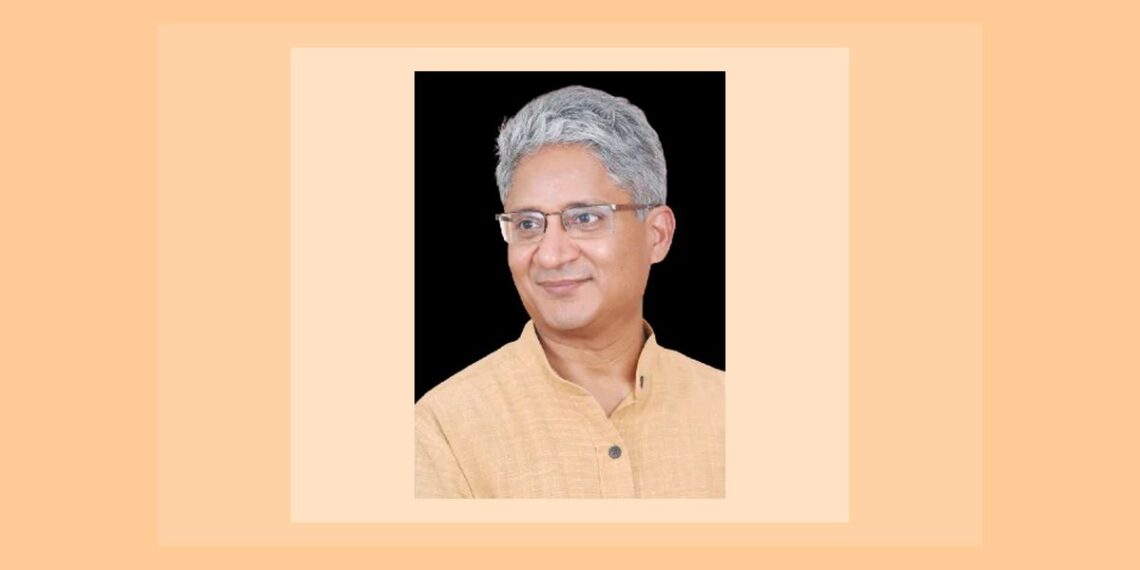
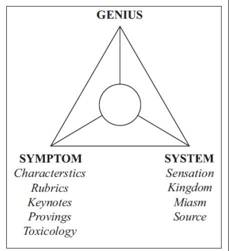
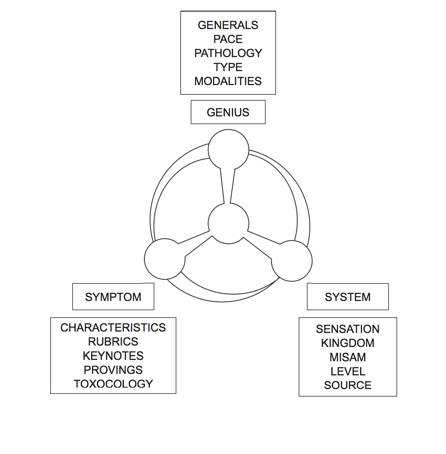
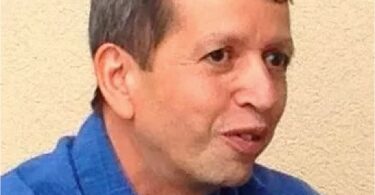
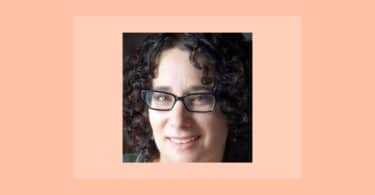
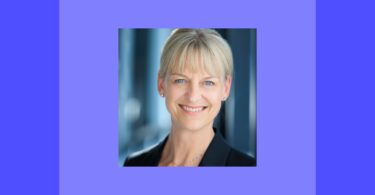
Finally, a clearly developed description of how the old and new methods integrate. Thanks for the interview!
This sounds fabulous. Hopefully this new balance will work towards integrating all homeopathic thought! Thank you!
The shift from only Mentals to Physicals also in the case taking has been admitted by Dr. Sankaran. What do the readers feel about this : Should our approach be with only Mentals or only Physicals or both ?
The example of Dr Kanjilal’s case quoted by Dr Rajan Sankaran – the rubric from complete repertory published as:
• MIND, RAGE, fury, delivery, parturition, during
Has Belladonna as a single remedy.
however the rubric:
RAGE, fury pain, from delivery, parturition, during (1)
has a single remedy , Chamomilla.
Readers may kindly note. thanks